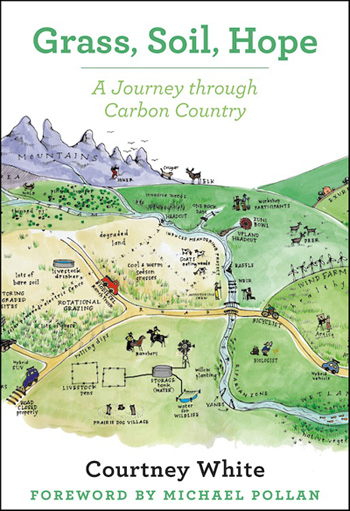This book tackles an increasingly crucial question: What can we do about the seemingly intractable challenges confronting all of humanity today, including climate change, global hunger, water scarcity, environmental stress, and economic instability?
The quick answers are: Build topsoil. Fix creeks. Eat meat from pasture-raised animals. Soil scientists maintain that a mere 2 percent increase in the carbon content of the planet’s soils could offset 100 percent of all greenhouse gas emissions going into the atmosphere. But how could this be accomplished? What would it cost? Is it even possible?
Yes, says author Courtney White, it is not only possible, but essential for the long-term health and sustainability of our environment and our economy.
Right now, the only possibility of large-scale removal of greenhouse gases from the atmosphere is through plant photosynthesis and related land-based carbon sequestration activities. These include a range of already existing, low-tech, and proven practices: composting, no-till farming, climate-friendly livestock practices, conserving natural habitat, restoring degraded watersheds and rangelands, increasing biodiversity, and producing local food.
In Grass, Soil, Hope, the author shows how all these practical strategies can be bundled together into an economic and ecological whole, with the aim of reducing atmospheric CO2 while producing substantial co-benefits for all living things.
“Hope in a book about the environmental challenges we face in the 21st century is an audacious thing to promise, so I’m pleased to report that Courtney White delivers on it. He has written a stirringly hopeful book.”—Michael Pollan, from the Foreword
“A great practical book that I hope will be read by many people in all walks of life. The solutions Courtney illustrates can and will do what is required, and he tells the story well.”—Allan Savory, president and founder of the Savory Institute
“A wonderfully accessible account of the promise of soil and agriculture for a better climate and better future.”—Thomas E. Lovejoy, senior fellow, United Nations Foundation





